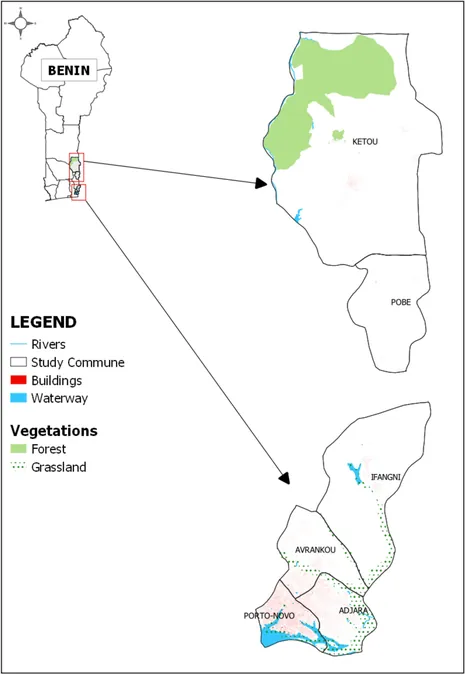
Unraveling the Secrets of Aedes Mosquitoes: Key Vectors in Benin's Arbovirus Battle
2025-08-22
Author: Wei Ling
Understanding the Threat of Aedes Mosquitoes in Benin
Aedes aegypti and Aedes albopictus—two notorious mosquitoes—are critical players in the spread of dengue fever in Benin. Their biology and behavior are crucial components in devising effective prevention strategies against these potentially deadly viruses.
Exploring the Study Design
This groundbreaking study involved comprehensive surveys of mosquito populations in southeastern Benin. Researchers utilized methods such as human landing catches and a Prokopak aspirator to collect data on the presence of Aedes species and their breeding sites.
Alarming Findings on Mosquito Populations
Out of 11 mosquito species identified, Aedes aegypti and Aedes albopictus were dominant, showing relative abundances between 29.57% to 43.99% and 16.26% to 45.65%, respectively. Used tires emerged as the top breeding ground, harboring nearly half of all mosquito larvae—highlighting the significant environmental implications of waste management.
Aedes Behavior: Aggressive Biting Patterns
Observation revealed that both Aedes species exhibit aggressive biting tendencies during specific times: first from 7-11 AM, and then again from 4-7 PM. Alarmingly, up to 76.47% of Aedes aegypti females and 81.21% of Aedes albopictus females had already laid eggs, positioning them as serious threats for disease transmission.
Ecological Adaptability: Aedes Mosquitoes on the Rise
These mosquitoes are not just survivors; they are thriving. Native to Africa and Asia, they have expanded globally, often hitching rides in used tires. This adaptability poses a significant challenge for public health, especially in regions like West Africa, where outbreaks of dengue and other arboviral diseases are on the rise.
The Dengue Epidemic: A Call to Action
The implications of this study resonate at a global scale, especially with the alarming rise in dengue cases reporting over 7.6 million globally by April 2024, exceeding the previous year’s total. Africa accounts for a staggering percentage of these cases.
Conclusions and Future Directions
This study shines a light on key insights into the life cycle and ecology of Aedes mosquitoes in Benin. With over 75% of these vectors being parous, effective measures need to be prioritized. It's critical to implement targeted vector control strategies, particularly as current indoor treatments may fall short against these outdoor-dwelling insects.
Final Thoughts: Community Engagement is Key
To mitigate the threat posed by Aedes aegypti and Aedes albopictus, community awareness and involvement in waste management can significantly contribute to reducing breeding sites. Only with combined efforts can we hope to combat the surge of arboviral diseases effectively.





 Brasil (PT)
Brasil (PT)
 Canada (EN)
Canada (EN)
 Chile (ES)
Chile (ES)
 Česko (CS)
Česko (CS)
 대한민국 (KO)
대한민국 (KO)
 España (ES)
España (ES)
 France (FR)
France (FR)
 Hong Kong (EN)
Hong Kong (EN)
 Italia (IT)
Italia (IT)
 日本 (JA)
日本 (JA)
 Magyarország (HU)
Magyarország (HU)
 Norge (NO)
Norge (NO)
 Polska (PL)
Polska (PL)
 Schweiz (DE)
Schweiz (DE)
 Singapore (EN)
Singapore (EN)
 Sverige (SV)
Sverige (SV)
 Suomi (FI)
Suomi (FI)
 Türkiye (TR)
Türkiye (TR)
 الإمارات العربية المتحدة (AR)
الإمارات العربية المتحدة (AR)